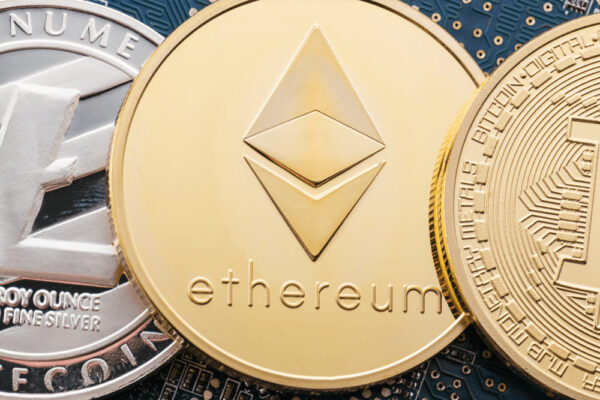The History and Evolution of Ethereum
4 min read
History and Evolution of Ethereum
Ethereum, launched in 2015 by visionary programmer Vitalik Buterin, has been a trailblazer in blockchain technology, driving advancements in decentralized applications (DApps) and smart contracts. Its influence on shaping the decentralized future of finance is significant. Amidst this evolution, the EthereumCode app has emerged, showcasing the platform’s adaptability. Developed within the thriving Ethereum ecosystem, this cutting-edge application utilizes the blockchain for secure financial transactions. The EthereumCode app epitomizes the ongoing innovation within Ethereum, exemplifying its capacity to facilitate groundbreaking developments in decentralized technology and contributing to the transformative landscape of blockchain.
Genesis of Ethereum
The journey of Ethereum began with a white paper published by Buterin in late 2013. Fueled by his dissatisfaction with the limitations of Bitcoin in supporting more complex functionalities, Buterin proposed a new blockchain platform that could facilitate the creation of decentralized applications. This marked the genesis of Ethereum, laying the groundwork for a revolutionary shift in the blockchain paradigm.
The Birth of Ethereum
In July 2015, Ethereum officially went live with the release of its first version, known as Frontier. This marked a significant milestone in the blockchain space, as Ethereum introduced the concept of smart contracts — self-executing contracts with the terms of the agreement directly written into code. This innovative feature opened up a plethora of possibilities, allowing developers to create decentralized applications on the Ethereum blockchain.
Smart Contracts and Decentralized Applications
Ethereum’s introduction of smart contracts revolutionized the way agreements are executed. These self-executing contracts automatically enforce and execute the terms of an agreement without the need for intermediaries, providing a level of transparency and efficiency previously unseen in traditional systems. This breakthrough paved the way for the development of a wide array of decentralized applications, ranging from decentralized finance (DeFi) platforms to non-fungible token (NFT) marketplaces.
The DAO Incident
Despite its early successes, Ethereum faced a significant challenge in 2016 with the infamous DAO (Decentralized Autonomous Organization) incident. A smart contract vulnerability was exploited, leading to a massive loss of funds. In response, the Ethereum community faced a tough decision — whether to roll back the blockchain to undo the damage, a move that went against the very principles of immutability. Ultimately, the community chose to fork Ethereum, leading to the creation of Ethereum (ETH) and Ethereum Classic (ETC), two separate blockchains with different transaction histories.
Ethereum 2.0: The Transition to Proof of Stake
As Ethereum continued to gain traction, scalability and energy efficiency became pressing concerns. In response, Ethereum 2.0, also known as Eth2 or Serenity, was proposed as an upgrade to address these issues. The most significant change in Ethereum 2.0 is the transition from proof of work (PoW) to proof of stake (PoS) consensus mechanism. This move aims to enhance scalability, security, and sustainability by reducing the energy consumption associated with mining.
Interoperability and the Ethereum Ecosystem
Ethereum’s influence extends beyond its native blockchain. The rise of interoperability protocols, such as the ERC-20 and ERC-721 standards, has enabled tokens and assets to seamlessly move across different blockchain networks. This interoperability has contributed to the growth of the broader Ethereum ecosystem, fostering collaboration and innovation within the blockchain space.
Navigating the Ethereum Wave in the Dynamic World of Cryptocurrency Trading
Within the dynamic realm of cryptocurrency trading, platforms akin to significant players have emerged. As Ethereum undergoes continuous evolution, the online trading landscape transforms in tandem. These platforms furnish traders with user-friendly interfaces, enabling them to navigate the intricacies of the cryptocurrency market. These tools and features are strategically crafted to leverage the opportunities arising from the ongoing developments within the Ethereum ecosystem.
Challenges and Future Prospects
While Ethereum has undoubtedly made significant strides, it faces challenges such as scalability, network congestion, and the environmental impact of mining. Ethereum’s development community is actively working on solutions, including the transition to Ethereum 2.0 and the integration of layer 2 scaling solutions. The future of Ethereum holds the promise of a more scalable, sustainable, and interconnected blockchain ecosystem.
Conclusion: A Trailblazer in Decentralization
From its humble beginnings outlined in Vitalik Buterin’s white paper to its current status as a trailblazer in the world of blockchain, Ethereum has come a long way. Its impact on decentralized finance, smart contracts, and the broader blockchain space cannot be overstated. As Ethereum continues to evolve and overcome challenges, it remains a beacon of innovation, inspiring the next wave of decentralized technologies and applications. The journey of Ethereum is far from over, and its future promises to be as dynamic and transformative as its history.





